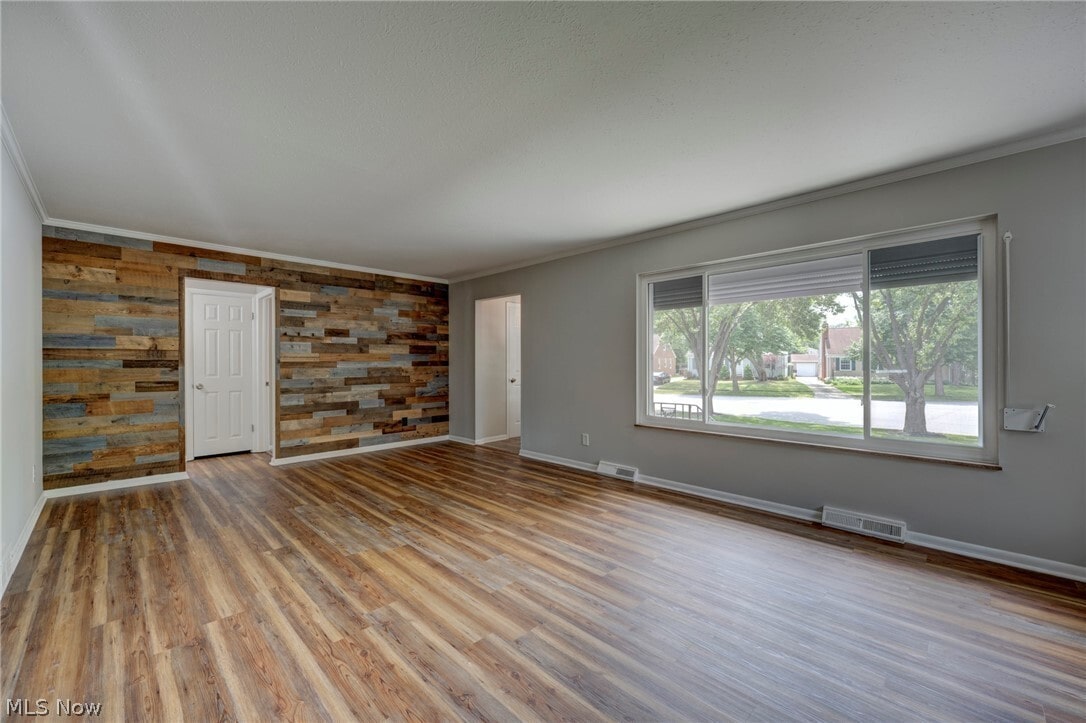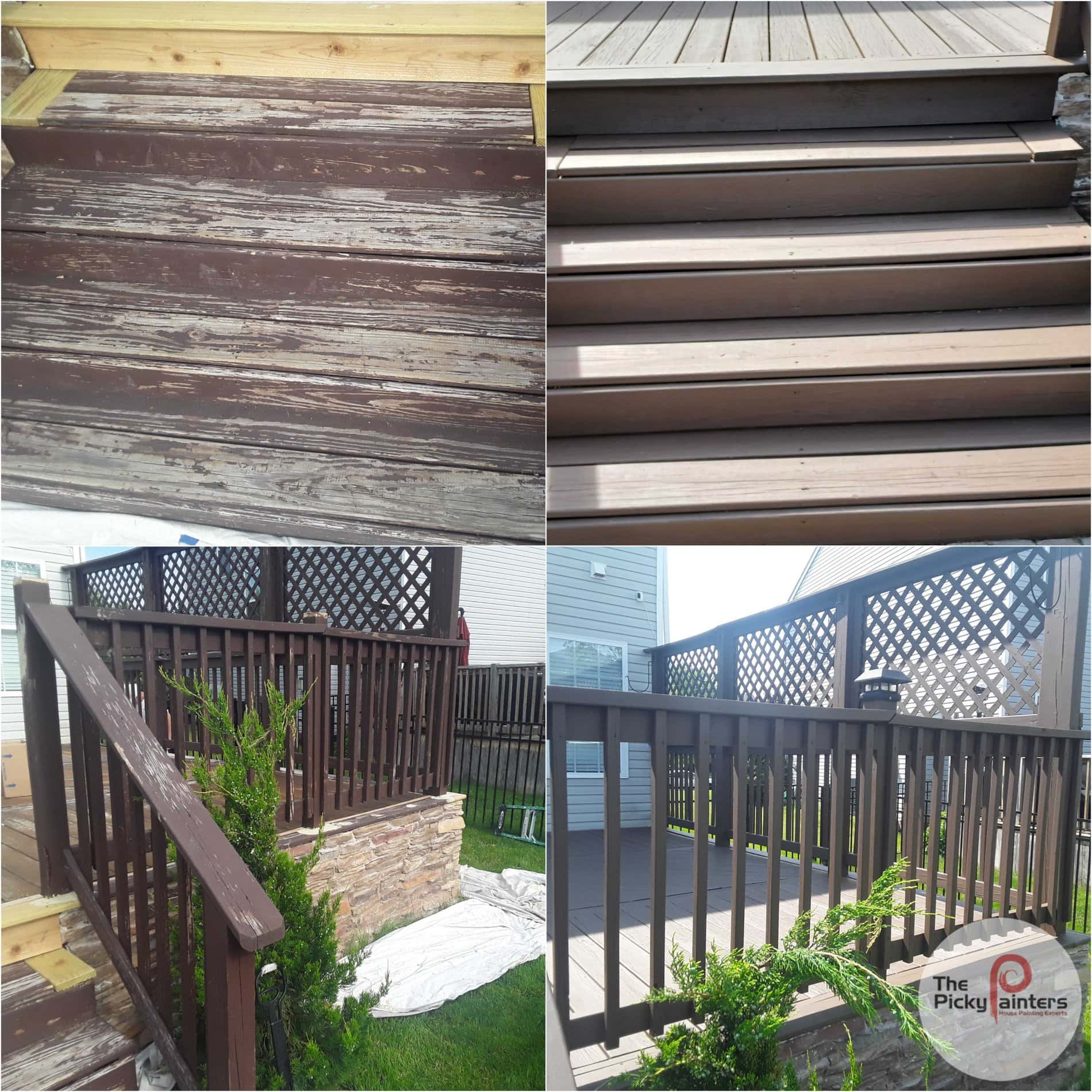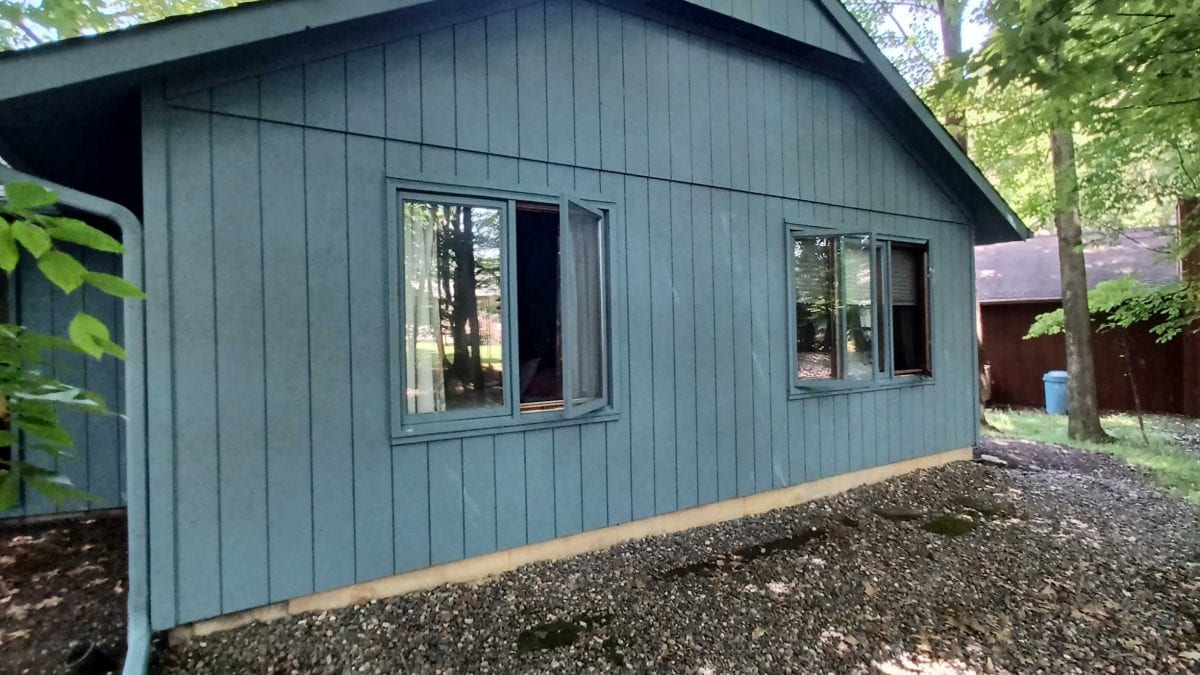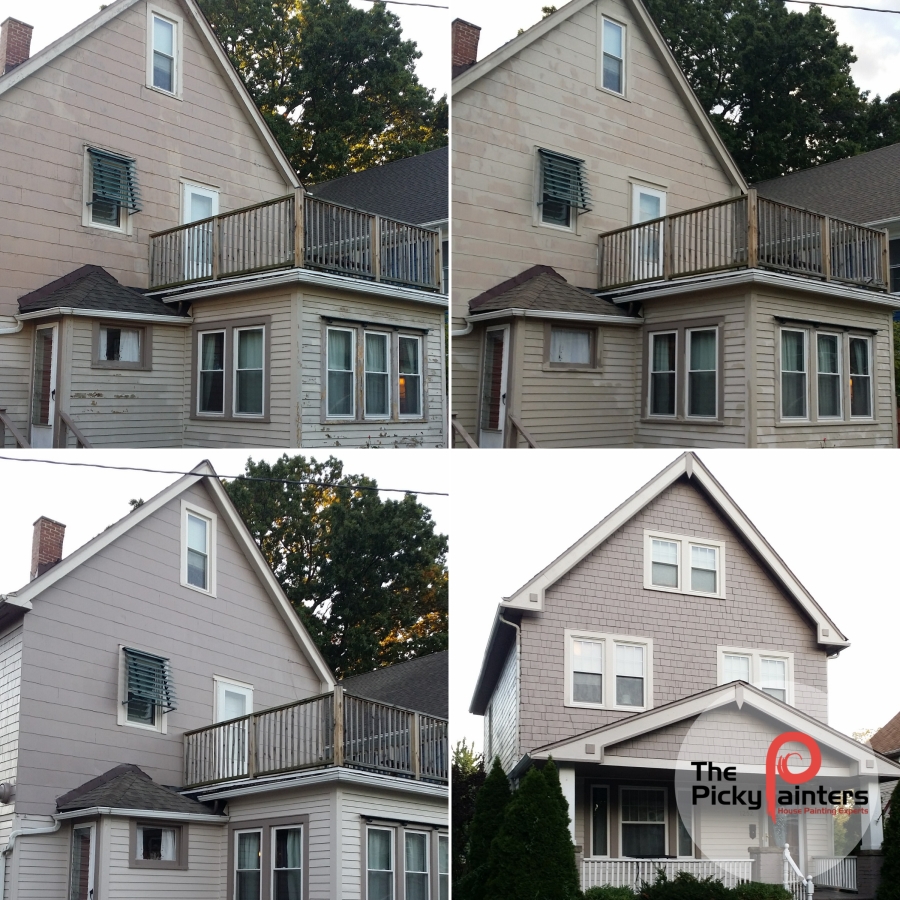
How Much Does It Cost To Paint A Great Room?
September 24, 2022
Frequently Asked Questions For Professional House Painters
October 1, 2022Most homeowners often struggle between painting vs. staining their exterior wood siding. Both provide protection and preserve the beauty of a home. But while they are suitable for certain materials, there are still some things that should be considered first.
Painting or staining inhibits moisture, wood rot, and pest infiltration. It also maintains the best-looking siding of your home. However, the most crucial question is whether to use paint or stain to keep the house siding.
Painting Vs. Staining: The Difference
Solid stains and paint are similar, so it’s not easy to distinguish them from the naked eye. They leave a layer on the wood’s surface where they are applied and do not permeate the wood. Both come in any color and offer the most comprehensive and durable protection for house siding.
Paint and stain have one thing in common: they use the same ‘ingredients’ to coat a surface in a protective layer of color. Yet, there are some inherent differences, and the most significant one is that paint adheres to the surface of the item being painted, whereas stain is absorbed into it.
Staining has several benefits, but its ability to withstand the effects of changing weather and expand and contract with the wood is its most significant benefit. Unlike paint, stain allows for more natural airflow through the wood.
When painting, on the other hand, a thicker coat of paint dries more quickly and creates an enormous barrier. Paint requires fewer coats because it is thicker than stain. You may need to apply much more stain if the surface is absorbent.
The Pros of Staining
- Stain is typically less expensive than paint.
- It is easy to apply stain and recoat surfaces that require touch-ups.
- Because stain does not necessarily require priming, it is faster to apply than paint. It also only usually requires one coat.
- The stain enhances wood surfaces rather than masking them. It gives off a more rugged feel.
- Stain is more resistant to chipping, while the paint is more likely to peel, split, or flake.
The Pros Of Painting
- Paint has a much more comprehensive range of colors than stain.
- The paint has a more consistent surface finish.
- There are more sheens and finishes offered in paint.
- Paint can be applied over already painted surfaces (after prep), but a stain cannot be applied over paint.
Painting Vs. Staining: Which One Should You Use?
Staining
Consider the surface coated when picking between solid stain or paint for exterior wood siding. Solid stains work best when applied to fresh woods. It enters the wood better than paint and serves as its own primer. Nevertheless, it does not perform well when applied to an already-painted surface.
Solid stain is an ideal choice for new cedar siding, shake shingles, and fencing since it can seal the wood without using a primer, saving time and money on the number of applications required to complete the job. Although applying a solid stain over paint is not always the ideal option, it is simple to paint over a solid stain.
Thus, a solid stain is frequently a wise choice for the first few years of a new house or deck’s life.
Paint
Despite the advantages of solid stains, paint provides more protection, durability, and a wider variety of color options. The solid stain can often resemble paint when put over a previously painted or sealed surface.
Even so, it might not have the benefits of quality exterior paint due to its shorter lifespan and lower level of protection.
Solid stains fade faster than paint, requiring you to repaint them sooner. As a result, paint is typically the best solution. Nonetheless, a solid stain can be beneficial if the surface being stained is bare, and homeowners want to preserve the wood’s texture.
It ultimately boils down to personal preference and the practicality of the surfaces you cover when selecting whether to paint or stain your home. Reach out to professional painters if you think you need further advice.
If you are in the Cleveland area, you can give The Picky Painters a call.
Checkout out previous projects:

Contact us at (216) 403-2545 or email joe@thepickypainters.com.
Meanwhile, if you’re interested in deck staining, read: Wood Deck Staining info and tips from Local Cleveland Painters.
For paint color tips, read: Three Color Tips From The Picky Painters In Cleveland, Ohio.





